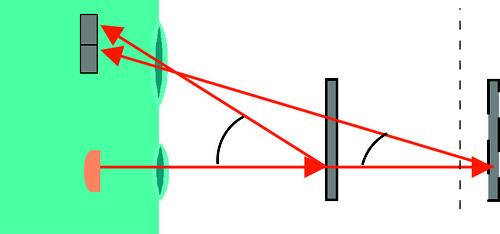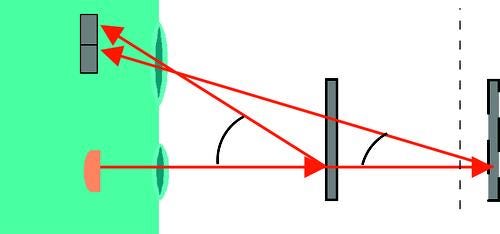Distance-Based Sensors Measure Up
February 7, 2013

When you visit someone's house, you probably use the doorbell at the front door to let him or her know of your arrival. But a single doorbell in the lobby of a 20-story apartment complex doesn't make sense. Because there are many tenants, you must first determine the apartment you want to visit and alert just the people in that apartment (by buzzer, phone, or doorbell) of your presence.
Presence is helpful information in some cases, as in the first scenario. In that case, you push a button and someone knows you're present. But sometimes knowing presence alone isn't enough, and you must also know location information, as in the second scenario. In that case, the location of the apartment you want to visit and a signal of your presence are both required.

Similarly in the world of sensing, presence is sufficient information for many industrial or commercial applications. And photoelectric presence sensing isn't just a staple of automation; it's a ubiquitous part of our daily lives. When our movement though an automatic sliding door is monitored to prevent the door from closing on us and when an intelligent faucet detects our hands and starts the flow of water, a photoelectric presence sensor is likely behind the scene. Photoelectric sensors serve their purpose of presence detection well. But simply detecting if something is present isn't always enough. Knowing that an object is within a certain range or identifying an object's precise location may yield more helpful information. Over time, distance-based photoelectric sensing has evolved as the go-to technology when presence sensing doesn't cut it.
Today, three technologies have risen as the strongest methods of distance-based photoelectric sensing. They are Single-Pixel Technology (SPT), Multi-Pixel Technology (MPT), and Pulse Ranging Technology (PRT.)
Single-Pixel Technology, alternately known as background suppression (BGS), is the simplest principle to implement and the most frequently used. It utilizes the geometry of optics to determine whether an object is closer than a defined distance. For example, if cookies on a conveyor belt must be counted without detecting the belt or if the level of molded plastic parts in a hopper must be monitored without sensing the hopper surface, then SPT is the best sensing solution. SPT sensors emit a beam of light, typically infrared or visible red, which is reflected by an object back to the sensor's receiver.
The angle of that reflected light beam relative to the emitted light beam axis varies based on the distance to the sensed object. The closer an object is to the sensor, the larger the reflected light angle. The farther away an object is, the smaller the reflected light angle. So when the reflected light shines on one segment of the single pixel, the sensor recognizes that the detected object is in the near field. But when the reflected light shines on the other segment of the pixel, it is recognized as being in the far field and is ignored. SPT is ideal for ignoring objects in the background and for consistent detection of objects in the near field, regardless of their color or reflectivity.
The older alternative to this technology is diffuse mode sensing in which objects are detected based on the amount of reflected light energy. But diffuse mode sensing is prone to detecting background objects and has starkly different sensing distances depending on the object's attributes.
About the Author(s)
You May Also Like



.jpg?width=300&auto=webp&quality=80&disable=upscale)

